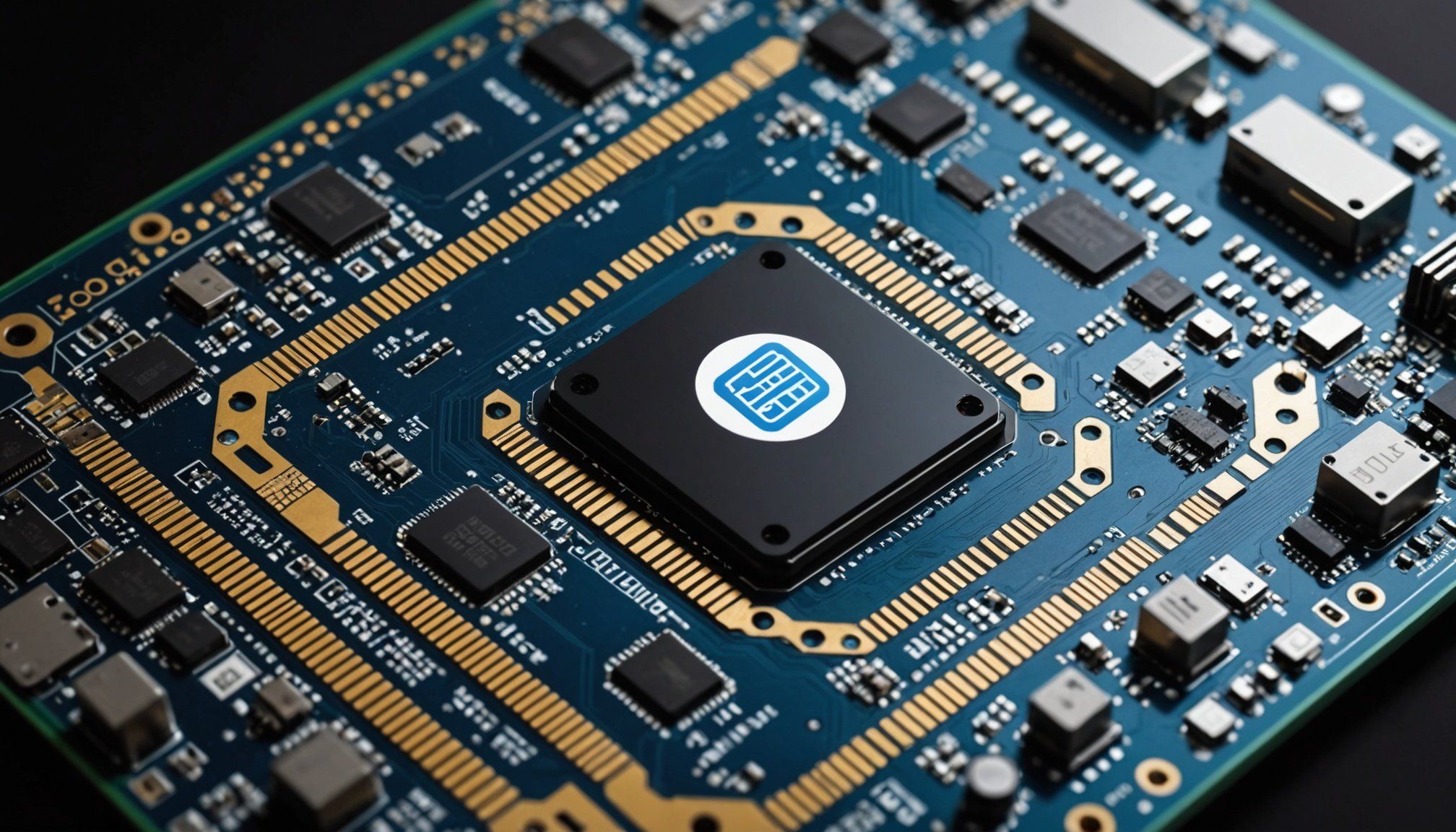Overview of Deep Learning on Edge Devices
Edge AI is transforming how we approach data processing by allowing Embedded Systems to execute tasks at the data source, rather than relying solely on centralized servers. A critical component of IoT networks, these edge devices perform deep learning operations that enable faster decision-making and real-time responsiveness essential for modern applications.
The significance of deep learning in edge computing cannot be overstated. It empowers devices to operate autonomously, making them invaluable in sectors like healthcare, automotive, and smart homes. Without needing constant connectivity to a cloud system, these systems process data locally, reducing latency and network bandwidth requirements, while enhancing data privacy.
Also read : Mastering AI Infrastructure: Your Ultimate Guide to Effortless Big Data Management
Edge AI technologies have advanced significantly, driven by the increasing demand for smarter, more autonomous devices. This progress is evidenced by more powerful hardware, such as AI accelerators optimized for on-device processing, and sophisticated software frameworks that support efficient model execution.
In conclusion, the evolution of edge AI reflects a paradigm shift in computing where intelligence is distributed closer to the source, improving operational efficiency and reliability. This will foster further growth and innovation, as we continue to explore the potential of integrating deep learning models into a wider array of IoT devices.
Topic to read : Elevate Your Cybersecurity: Essential Tactics for Enhancing Encryption in Hybrid Cloud Environments
Performance Optimization Techniques
In the realm of edge computing, efficiency enhancement is pivotal to ensuring devices operate optimally with deep learning models. One vital method is model compression, which involves techniques such as quantization and pruning. By reducing model sizes, quantization helps lower memory usage and increase inference speed without significantly degrading accuracy. Pruning, on the other hand, eliminates unnecessary weights, further refining model size and resource demand.
To harness the full potential of edge devices, hardware acceleration is often employed. Specialized hardware like Tensor Processing Units (TPUs) and Field Programmable Gate Arrays (FPGAs) can dramatically boost performance, offering superior processing speeds compared to conventional CPUs. These units enable real-time responsiveness, crucial for applications that demand immediate decision-making.
For optimizing inference speed on edge devices, there are several best practices:
- Aligning software frameworks like TensorFlow Lite with hardware capabilities
- Fine-tuning hyperparameters for optimal throughput
- Implementing batch processing to maximize data handling efficiently
By integrating these techniques, organizations can achieve substantial performance gains, ensuring their edge devices remain robust and competitive in fast-evolving technological landscapes. Additionally, exploring these strategies supports scalability and innovation in deploying deep learning models across diverse IoT environments.
Addressing Challenges in Edge Deep Learning
In the domain of edge deep learning, deploying models involves overcoming several challenges. A primary concern is latency reduction—a critical factor for applications demanding rapid response times. To mitigate latency, implementing local processing capabilities on edge devices is crucial, minimizing data transmission delays to remote servers. Additionally, optimizing algorithms to function with limited computational resources ensures real-time processing.
Maintaining data privacy is another significant challenge. Edge devices process sensitive information, often without direct cloud involvement, to enhance security and restrict data exposure. Implementing robust encryption and data anonymization techniques can protect user privacy effectively. Moreover, employing federated learning allows models to be trained locally on multiple devices, aggregating results without sharing raw data, preserving confidentiality.
Resource constraints on edge devices pose additional hurdles. With limited power and storage, efficient algorithms and lightweight models are essential to sustaining functionality. Advanced methods like model pruning and quantization help streamline operations within confined parameters.
Addressing these challenges necessitates a combination of innovative technological solutions and strategic deployment practices, ensuring that edge devices remain secure, efficient, and responsive in dynamic environments.
Comparing Optimization Methods
In edge computing, evaluating the effectiveness of various optimization techniques is crucial for enhancing performance. Comparative analysis using specific performance metrics helps to objectively assess the trade-offs between different methods.
Performance Metrics in Edge AI
Performance metrics like latency, throughput, and energy consumption are vital in determining the success of optimization strategies. Latency measures how quickly an edge device processes data, vital for applications needing instant reactions. Throughput gauges the volume of data processed over time, indicating system efficiency. Energy consumption assesses power efficiency, vital for battery-powered edge devices.
Trade-offs in Optimization
Understanding trade-offs is essential when optimizing for edge AI. Increasing model complexity can enhance accuracy but may elevate energy consumption and latency. Quantization and pruning help reduce model size and improve responsiveness but might slightly reduce precision, highlighting the delicate balance between these factors.
Benchmarking Techniques
Benchmarking involves measuring the performance of models against standard datasets to determine optimization efficacy. Using standardized benchmarks allows for consistent evaluation, making it easier to choose the best methods tailored to a particular application. By prioritizing relevant metrics, developers can make informed decisions that align with their specific needs.
Future Trends in Edge AI
The evolution of Edge AI is leading to remarkable innovations, with next-gen technologies pushing the boundaries of what edge computing can achieve. As these technologies mature, they promise significant advancements, including enhanced processing power and improved connectivity.
5G Integration plays a crucial role in this transformation. The increased bandwidth and lower latency offered by 5G networks enable faster data transmission, bolstering the capabilities of edge devices. These benefits support more complex autonomous systems and AI applications, which require swift data handling and minimal delay. With faster networks, real-time decision-making becomes more feasible, empowering applications like autonomous vehicles and advanced robotics.
Another exciting trend is the development of autonomous systems, which are becoming increasingly sophisticated. These systems can operate independently, often in real-time, without human intervention. As AI models become more efficient, they enable applications ranging from smart agriculture to intelligent infrastructure monitoring.
Looking ahead, the integration of new technologies with edge AI and IoT networks will reshape industries, leading to smarter environments and more responsive applications. As we venture deeper into this era, the symbiotic relationship between 5G connectivity and edge computing will drive unprecedented growth and innovation in the field.
Innovative Strategies for Implementation
In the realm of edge computing, deploying deep learning models efficiently is key for seamless performance. Selecting the right frameworks is the foundation. For instance, TensorFlow Lite and PyTorch Mobile are popular choices as they cater specifically to edge environments. These frameworks optimise model execution on devices with limited resources, ensuring smooth operations.
Crucially, developing effective deployment strategies is paramount. Regular updates, for instance, keep models accurate and relevant without disrupting ongoing operations. Strategies that allow deployment with minimal downtime increase efficiency and flexibility. Techniques such as containerisation can make updating simpler and more manageable, encouraging consistency in performance.
To illustrate successful implementations, consider the collaboration between Mobileye and Intel. They pioneered real-time traffic analysis through a network of edge devices. By leveraging optimised frameworks and robust deployment strategies, they achieved remarkable results. This case study underscores the importance of meticulous planning and choosing the right technologies to overcome potential challenges, creating robust, adaptable systems.
Lastly, incorporating user feedback mechanisms helps refine these strategies. Gathering real-world insights enables continual improvement in deployment efforts, ensuring that organisations not only meet but exceed the dynamic requirements of modern applications.











